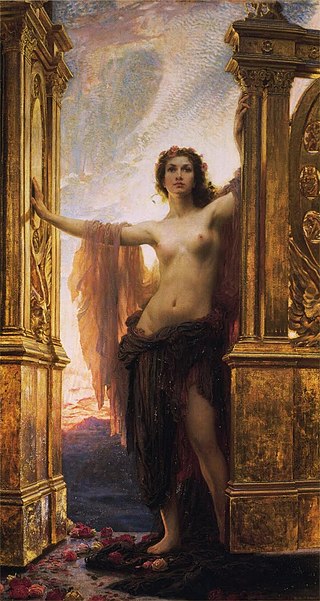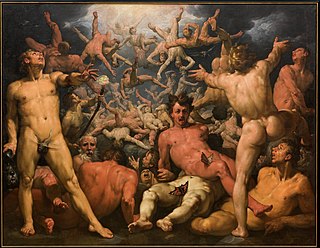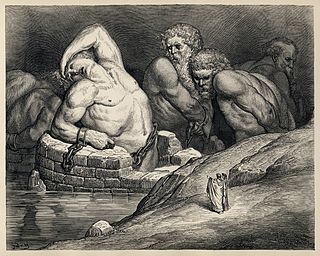This article needs additional citations for verification .(March 2013) |
Basilea was the first queen of the legendary Kingdom of Atlantis in ancient Greek folk tradition.
This article needs additional citations for verification .(March 2013) |
Basilea was the first queen of the legendary Kingdom of Atlantis in ancient Greek folk tradition.
Basilea was the eldest and one of the most celebrated daughters of Uranus, who had forty-five children by various wives, including Rhea and Pandora. Basilea became known as the “Great Mother” due to the solicitous way in which she cared for her younger brothers. [1] After her father’s death, she was elected Queen of Atlantis by popular vote. She married her brother Hyperion and had two children: Selene and Helios, the goddess of the moon and god of the sun, respectively. However, her other brothers murdered Hyperion, for fear that he might usurp the throne, and drowned Helios in the River Eridanus or Po in Italy. Out of love for her brother, Selene committed suicide by jumping from a rooftop. Upon learning of the death of her children, Basilea went mad and “wandered up and down, with hair disheveled and bedizened with ornaments, playing wildly on the timbrel and cymbal.” [1] When the people of Atlantis tried to restrain her, she disappeared into a terrible lightning storm. In honor of Basilea and her children, divine rites were established.
Basilea is often confused for Theia, the more accepted mother of Selene, Helios, and in addition, Eos, and wife to Hyperion. It is unsure whether or not they are the same figure.
Basilea is also mentioned quite differently in other versions. She is listed as a daughter of Coelus and Terra, [2] [3] and is implied to be the mother of all gods. [4] It is also implied that she is another version of Aphrodite (Roman, Venus). [5] [6]

In ancient Greek religion and mythology, Artemis is the goddess of the hunt, the wilderness, wild animals, nature, vegetation, childbirth, care of children, and chastity. In later times, she was identified with Selene, the personification of the Moon. She was often said to roam the forests and mountains, attended by her entourage of nymphs. The goddess Diana is her Roman equivalent.

In ancient Greek mythology and religion, Eos is the goddess and personification of the dawn, who rose each morning from her home at the edge of the river Oceanus to deliver light and disperse the night. In Greek tradition and poetry, she is characterized as a goddess with a great sexual appetite, who took numerous human lovers for her own satisfaction and bore them several children. Like her Roman counterpart Aurora and Rigvedic Ushas, Eos continues the name of an earlier Indo-European dawn goddess, Hausos. Eos, or her earlier Proto-Indo-European (PIE) ancestor, also shares several elements with the love goddess Aphrodite, perhaps signifying Eos's influence on her or otherwise a common origin for the two goddesses. In surviving tradition, Aphrodite is the culprit behind Eos' numerous love affairs, having cursed the goddess with insatiable lust for mortal men.

In Greek mythology, Pasiphaë was a queen of Crete, and was often referred to as goddess of witchcraft and sorcery. The daughter of Helios and the Oceanid nymph Perse, Pasiphaë is notable as the mother of the Minotaur. Her husband, Minos, failed to sacrifice the Cretan Bull to Poseidon as he had promised. Poseidon then cursed Pasiphaë to fall in love with the bull. Athenian inventor Daedalus built a hollow cow for her to hide in so she could mate with the bull, which resulted in her conceiving the Minotaur.

In Greek mythology, the Titans were the pre-Olympian gods. According to the Theogony of Hesiod, they were the twelve children of the primordial parents Uranus (Sky) and Gaia (Earth), with six male Titans—Oceanus, Coeus, Crius, Hyperion, Iapetus, and Cronus—and six female Titans, called the Titanides or Titanesses—Theia, Rhea, Themis, Mnemosyne, Phoebe, and Tethys.

In ancient Greek religion and mythology, Helios is the god who personifies the Sun. His name is also Latinized as Helius, and he is often given the epithets Hyperion and Phaethon. Helios is often depicted in art with a radiant crown and driving a horse-drawn chariot through the sky. He was a guardian of oaths and also the god of sight. Though Helios was a relatively minor deity in Classical Greece, his worship grew more prominent in late antiquity thanks to his identification with several major solar divinities of the Roman period, particularly Apollo and Sol. The Roman Emperor Julian made Helios the central divinity of his short-lived revival of traditional Roman religious practices in the 4th century AD.

Alexander Helios was a Ptolemaic prince and son of Pharaoh Cleopatra VII of the Ptolemaic dynasty and Roman triumvir Mark Antony. Alexander's fraternal twin sister was Cleopatra Selene II. Cleopatra named her son after Alexander the Great. His second name in Ancient Greek means "Sun"; this was the counterpart of his twin sister's second name Selene (Σελήνη), meaning "Moon".
In Greek mythology, Asia was one of the 3,000 Oceanids, daughters of the Titans Oceanus and his sister-spouse Tethys. In some accounts, her mother was called Pompholyge and sister of Libye.

In ancient Greek mythology and religion, Selene is the goddess and personification of the Moon. Also known as Mene, she is traditionally the daughter of the Titans Hyperion and Theia, and sister of the sun god Helios and the dawn goddess Eos. She drives her moon chariot across the heavens. Several lovers are attributed to her in various myths, including Zeus, Pan, and the mortal Endymion. In post-classical times, Selene was often identified with Artemis, much as her brother, Helios, was identified with Apollo. Selene and Artemis were also associated with Hecate and all three were regarded as moon and lunar goddesses, but only Selene was regarded as the personification of the Moon itself.

Theia, also called Euryphaessa, is one of the twelve Titans, the children of the earth goddess Gaia and the sky god Uranus in Greek mythology. She is the Greek goddess of sight and vision, and by extension the goddess who endowed gold, silver, and gems with their brilliance and intrinsic value.
In Greek mythology, Tethys was a Titan daughter of Uranus and Gaia, a sister and wife of the Titan Oceanus, and the mother of the river gods and the Oceanids. Although Tethys had no active role in Greek mythology and no established cults, she was depicted in mosaics decorating baths, pools, and triclinia in the Greek East, particularly in Antioch and its suburbs, either alone or with Oceanus.
In Greek mythology, Hyperion was one of the twelve Titan children of Gaia (Earth) and Uranus (Sky). With his sister, the Titaness Theia, Hyperion fathered Helios (Sun), Selene (Moon) and Eos (Dawn).

Clytie or Clytia is a water nymph, daughter of the Titans Oceanus and Tethys in Greek mythology. She is thus one of the 3,000 Oceanid nymphs, and sister to the 3,000 Potamoi.

Cleopatra Selene II was a Ptolemaic princess, Queen of Numidia and Mauretania and Queen of Cyrenaica. She was an important royal woman in the early Augustan age.

In Greek mythology, Gaia, also spelled Gaea, is the personification of Earth. Gaia is the ancestral mother—sometimes parthenogenic—of all life. She is the mother of Uranus (Sky), from whose sexual union she bore the Titans, the Cyclopes, and the Giants, as well as of Pontus (Sea), from whose union she bore the primordial sea gods. Her equivalent in the Roman pantheon was Terra.

The familiar name and large size of the Titans have made them dramatic figures suited to market-oriented popular culture.

Selene is a female given name taken from Selene in Greek mythology. Selene was an archaic lunar deity and the daughter of the Titans Hyperion and Theia. Her equivalent in ancient Roman religion and myth is Luna, Latin for "moon."

In Greek mythology, Clymene or Klymene was the name of an Oceanid nymph loved by the sun god Helios and the mother by him of Phaethon and the Heliades. In most versions, Clymene is the one to reveal to Phaethon his divine parentage and encourage him to seek out his father, and even drive his solar chariot.
In Greek mythology, Clymene or Klymene is the name of one of the three thousand Oceanid nymphs, usually the wife of Iapetus and mother by him of Prometheus, Epimetheus, Atlas and Menoetius.
In Greek mythology, Theia is one of the three thousand Oceanid nymphs, daughters of the Titans Oceanus and Tethys, and the mother of the Cercopes. She is not to be confused with Theia, sister to Oceanus and Tethys and mother of Helios, Selene and Eos.